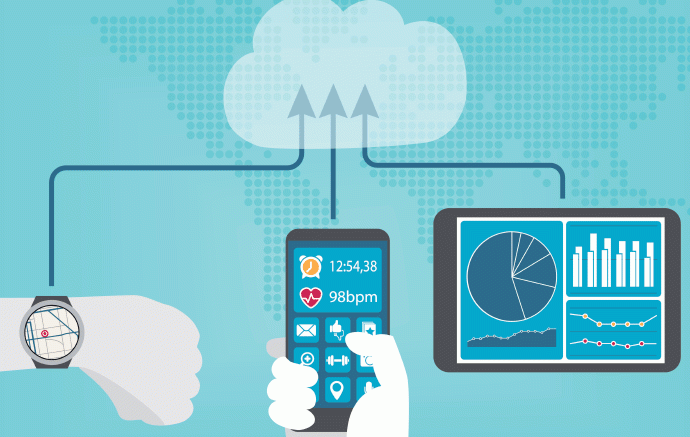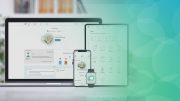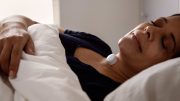Emma-Jane Roberts, Managing Director, Spirit Digital, explores how remote monitoring could play a crucial role in re-engineering NHS pathways to cope with the growing problem of multimorbidity.
Everyone knows that the way the NHS manages long-term condition (LTC) care is unsustainable. The need to establish new models, as laid out in NHS England’s ‘House of Care’ framework, is widely understood. Yet despite the rationale and the consensus, unlocking a solution at the local level remains a huge challenge. This need not be the case.
But first, let’s look at the trend-lines. The number of people with LTCs and multimorbidity continues to grow, placing intolerable pressure on services and pathways. More than 15 million people in England have at least one LTC, while the number with three or more is forecast to reach 2.9 million this year. The implications are significant. LTC patients already account for 50% of all GP appointments, 70% of all bed days and around 70% of acute and primary care budgets in England. As the population ages, those numbers are only going to increase. Recent research predicts that, by 2035, 2.5 million (17%) people over the age of 65 will have four or more chronic illnesses. Around two thirds of over 65s – a massive 9.7 million – will have at least two. But the problem is not one for the future – it lives in the here and now. Our ability to establish effective models of LTC care is vital to the sustainable delivery of safe, timely and high quality care. The question is: how do we do it?
It may surprise many to learn that an evidence-based solution is already out there. However, before we explore it, it’s important to examine the context in which it sits.
A primary problem: recognising deterioration
Fundamentally, the single biggest priority in the NHS is patient safety. Five years ago, in the wake of the Francis Report and the Berwick Review, a range of policies and measures were put in place to help clinicians recognise and respond to patient deterioration in acute settings. However, these same policies have never been extended into the community. As a result, clinicians in primary and community care are often unable to recognise deteriorating patients before they suffer an emergency exacerbation. The impact is felt on the front line of care in the form of increased demand for services, greater costs and poor health outcomes. The scenario is particularly common in patients with multimorbidity. The system is not set up to support them.
The problems with current approaches to multimorbidity are manifold. Primarily, chronic diseases are typically managed in isolation via services that are set up to focus on single conditions. Well-coordinated care is the exception not the rule, with pathways often fragmented and thwarted by a lack of informational connectivity.
Alongside this, LTC patients often receive limited support beyond the clinic. In the digital age, increased access to online information theoretically empowers patients to self-manage their conditions more effectively. However, the reality has not yet caught up with the rhetoric.
Services don’t always do enough to educate patients around their disease – expecting them to take greater responsibility for the management of their conditions simply because technology is there to empower them. It’s a passive approach that’s prone to risk. Wide variability in online health information, health literacy levels and the understanding of disease invariably leads to poor self-management and, at times, patient deterioration. The latter manifests itself in patients returning to the GP surgery for urgent treatment or presenting at A&E. Many of these emergency exacerbations are entirely avoidable. However, since clinicians have no advance visibility of patient deterioration, they cannot proactively intervene.
The conclusion is clear: current pathways are routinely configured to deliver expensive, reactive models of care. We have to reengineer them.
Regaining control through remote monitoring
The challenges of multimorbidity are familiar to every practice, community trust and acute hospital – many of whom have limited control over the flow of patients into their services. But familiar challenges can have familiar solutions. This is certainly the case with LTC care.
The simple use of mobile technology can, at a stroke, empower patients and clinicians with tools to support the safe, proactive and efficient management of LTCs. Remote monitoring solutions, delivered over intuitive tablet devices, provide a powerful platform for intensive monitoring, education and empowerment of at-risk patients. These solutions are custom-designed to help patients engage with their health and self-manage their conditions through the daily capture of physiological data and self-reported information about their wellbeing. That data is linked to dynamic care plans and evidence-based algorithms that enable automated triage for healthcare teams when an escalation of care is required. Crucially, this gives clinicians real-time visibility of physiological trends to help them recognise and respond to deterioration. Moreover, it provides them with an evidence-base that gifts them ‘remote control’ of vulnerable patients, allowing them to intervene proactively rather than wait for a costly emergency exacerbation. This is hugely reassuring for patients and carers, who also feel in greater control of their care.
Adoption of remote monitoring solutions is growing across all settings within the NHS. Evidence shows it’s helping to facilitate earlier discharge, prevent readmission and reduce the risk of future exacerbations through better self-management. In chronic diseases like COPD, diabetes, heart failure and frailty, CCGs and community trusts are leveraging remote monitoring solutions to engineer more efficient pathways – with improved patient engagement and better self-management helping to alleviate the burden on services and lower the cost of care.
The principles of remote monitoring are strongly aligned with the key components of the ‘House of Care’ model for person-centred, co-ordinated care. The framework highlights the need for services that ‘engage and inform individuals and carers to self-manage’. It also calls for ‘organisational and clinical processes that structure around the needs of patients using the best evidence available’. Moreover, House of Care underlines the importance of ‘informational continuity’: if HCPs are to provide the right care at the right time, they ultimately need access to the right information. This is undoubtedly true. And it’s why remote monitoring solutions, which give clinicians unprecedented real-time visibility of their most at-risk patients, must play a key role in future models of LTC care.
It’s time to give clinicians – and patients – the remote control.





